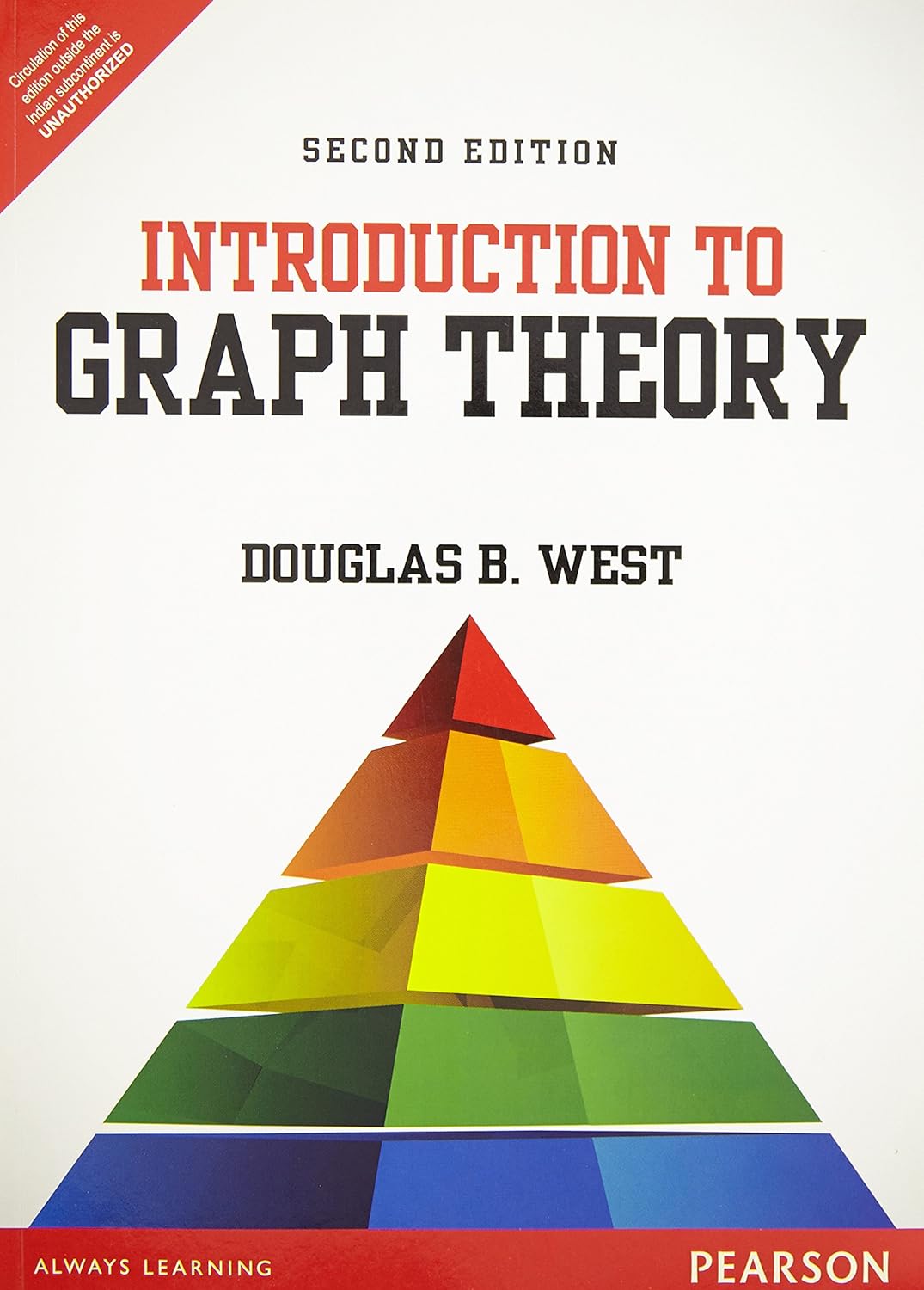
Original Title
Introduction to Graph Theory
Subject & College
Publish Date
2001-01-01
Published Year
2001
Publisher, Place
Format
paperback
Language
English
Average Ratings
Readers Feedback
Introduction to Graph Theory
"Douglas B. West’s Introduction to Graph Theory (1999) is one of the most celebrated textbooks on graph theory, offering a comprehensive exploration of the field....Read More
Arfa Anam Gulam Mustafa
Introduction to Graph Theory
“Douglas B. West’s Introduction to Graph Theory (1999) is one of the most celebrated textbooks on graph theory, offering a comprehensive exploration of the field. The book is a cornerstone for students and researchers in mathematics, computer science, and related disciplines, serving as an excellent resource for both undergraduate and graduate studies.
Content and Structure
The book’s structure is logical and carefully designed, starting with foundational concepts like definitions of graphs, paths, cycles, and trees, before progressing to more advanced topics like connectivity, matchings, graph colorings, and planarity. West covers a wide range of topics, including Eulerian and Hamiltonian graphs, graph algorithms, and extremal graph theory, ensuring a deep and well-rounded understanding of the subject. The theoretical rigor of the book is complemented by a multitude of proofs and theorems, which are presented clearly and concisely.
The organization of the chapters allows students to build a solid base before tackling more complex concepts. For advanced learners, the text introduces cutting-edge topics like Ramsey theory, random graphs, and network applications, ensuring relevance to current research.
Strengths
1. Mathematical Rigor: The book excels in its mathematical rigor, emphasizing formal definitions, proofs, and logical reasoning. This makes it an excellent resource for developing problem-solving and analytical skills in graph theory.
2. Exercises and Problems: Each chapter includes a diverse set of exercises, ranging from basic to challenging. The problems encourage independent exploration and enhance the learning experience. For advanced learners, the book includes research-oriented problems that provide exposure to open questions in the field.
3. Comprehensive Coverage: West’s ability to balance breadth and depth is commendable. The book caters to a wide audience, covering fundamental topics while introducing advanced concepts. It also discusses real-world applications of graph theory in fields like computer science, operations research, and network analysis.
4. Accessible Writing Style: Despite the mathematical rigor, the book is written in an accessible style, making it approachable for readers with a basic mathematical background. The explanations are clear, and the progression from simple to advanced topics is seamless.
Weaknesses
1. Dense Material: The depth of the material can be intimidating for beginners or those without a strong mathematical foundation. Supplementary materials or instructor guidance may be necessary for some learners.
2. Limited Visual Aids: While diagrams and illustrations are provided, their quantity is insufficient for certain complex topics. More visuals could have enhanced comprehension, particularly for visual learners.
3. Theoretical Emphasis: The book is heavily focused on theoretical aspects of graph theory, which may not fully satisfy readers seeking more emphasis on computational or practical applications.
Conclusion
Introduction to Graph Theory by Douglas B. West is a timeless classic that is highly recommended for students and researchers aiming to gain a solid foundation in graph theory. Its mathematical rigor, comprehensive coverage, and engaging style make it an invaluable resource for mastering the subject. However, its dense content and theoretical focus may require additional effort or supplementary resources for beginners. Overall, it is an essential addition to any mathematical library.
”
